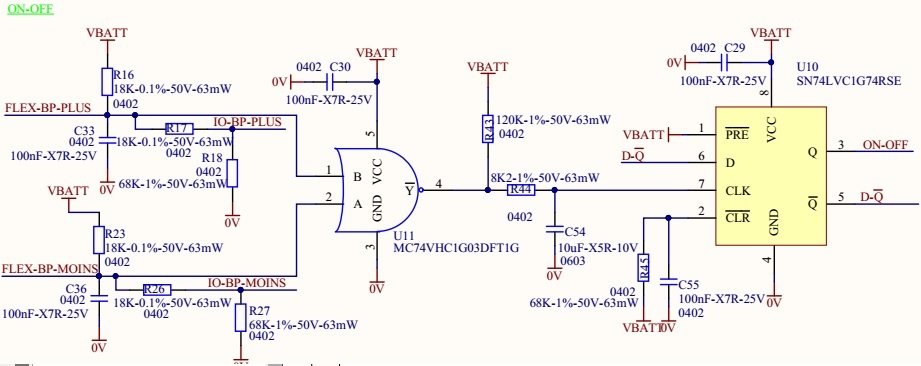Hello,
I have this schematic, the aim is to detect a simultaneous presssed push button during 1-2s. At each simultaneous press, the ON-OFF signal toggles.
For information, push button are not represented but the first is between 0V and FLEX-BP-PLUS and the second between 0V and FLEX-BP-MOINS.
So my problem is at the first press, ON-OFF goes correctly from 0 to VBATT, but impossible to re-toggles from VBATT to 0. It seems to be that the rising edge is not detected. Thinking that could be the rise time of CLK, I tried with a small C54 value (100nF and 470nF), same result and with C43 at 10k (+C54 = 100nF) and same result. Anyhow, the datasheet says that the rise time is not important, it's the voltage level.
The detection of the simultaneous press works correctly, so U11 is OK.
Somebody would have an idea wher's the problem in my design ?



